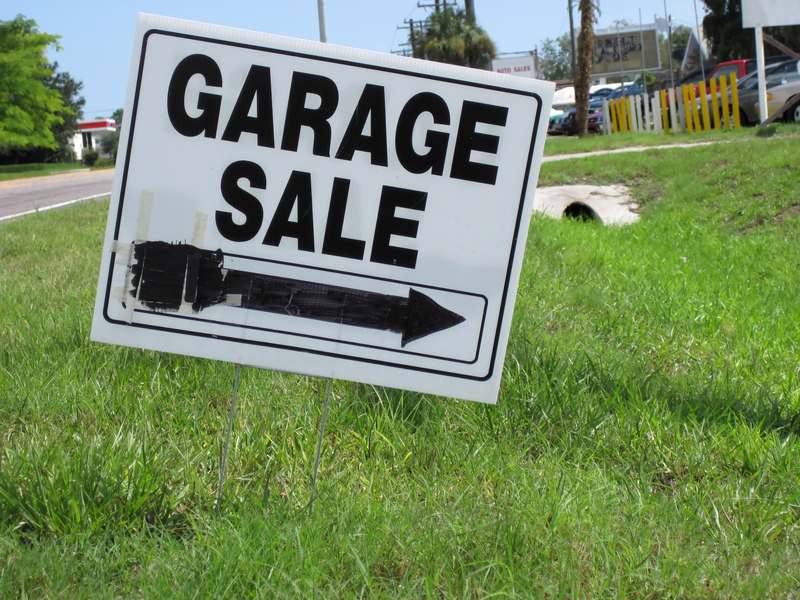The Importance of Educating Others on PPE Waste Disposal
As the use of personal protective equipment (PPE) becomes increasingly widespread in healthcare, industrial, and even daily settings, managing the waste generated by this protective gear is a growing concern. PPE waste disposal is no longer just the responsibility of healthcare professionals; it involves general citizens, workplaces, and institutions around the world. In this comprehensive article, we'll explore the critical importance of educating others on PPE waste disposal, best practices, environmental impacts, and practical strategies for fostering awareness and responsible action.

What is PPE Waste?
PPE, or Personal Protective Equipment, includes items such as:
- Face masks
- Gloves
- Gowns
- Face shields and goggles
- Aprons
- Shoe covers
During the COVID-19 pandemic and beyond, the use of these products has skyrocketed worldwide. Unfortunately, so has the volume of PPE waste. PPE waste disposal refers to the process of safely discarding, collecting, and managing these materials to reduce their environmental and health-related impacts.
Why is PPE Waste Disposal a Global Concern?
1. Environmental Impact
One of the most significant challenges with improper PPE waste management is its effect on the environment. Most PPE is made of single-use plastics and synthetic materials that do not biodegrade. When not disposed of correctly, these items can:
- End up in landfills, taking hundreds of years to decompose
- Enter waterways and oceans, posing threats to marine life
- Break down into microplastics that contaminate soil and food chains
Educating the public about correct PPE disposal prevents accumulation and helps protect ecosystems.
2. Public Health Risks
Improper PPE disposal can lead to significant health risks for sanitation workers, healthcare staff, and the general public. Used PPE may be contaminated with infectious agents, increasing the risk of disease transmission. Stray gloves and masks littered in public spaces can:
- Spread pathogens to waste handlers and cleaners
- Attract rodents and pests that can carry diseases
- Discourage community pride and responsibility
Understanding how to properly dispose of PPE waste is essential to break this cycle of contamination.
The Role of Education in PPE Waste Disposal
Spreading Awareness Is Key
The most effective way to improve PPE waste disposal practices is by educating individuals and communities. Lack of knowledge often leads to harmful disposal practices. Education helps to:
- Clarify what items are categorized as PPE waste
- Promote correct separation and segregation of waste
- Encourage the use of designated PPE waste bins
- Reduce littering in public areas
- Support recycling and reuse where possible
*Properly disposing of PPE takes just a few moments but can have a lasting impact on public health and the environment.*
Challenges in Educating on PPE Waste
While the need is clear, there are several barriers to effective PPE waste disposal education:
- Language and literacy gaps in diverse populations
- Lack of updated protocols in rapidly changing public health contexts
- Insufficient infrastructure for safe collection and disposal
- Behavioral resistance due to convenience or lack of incentive
Overcoming these challenges requires coordinated efforts between government agencies, employers, schools, and community leaders.
Best Practices for PPE Waste Disposal Education
1. Integrate PPE Disposal in Workplace Safety Training
Every workplace where PPE is used, from hospitals and factories to retail stores, should include PPE waste disposal procedures in their health and safety protocols. This can be done by:
- Placement of clear instructional posters near waste bins
- Providing regular training sessions and refreshers
- Using demonstration videos showing step-by-step disposal methods
- Assigning staff members as disposal "champions" to answer questions and monitor compliance
2. Engage Schools and Educational Institutions
Teaching children and young adults about the proper disposal of PPE waste instills lifelong habits. Schools can participate by:
- Including PPE waste management in science and health classes
- Organizing PPE collection drives or cleanup campaigns
- Inviting local waste management experts for talks or workshops
Early education leads to a generation that is conscious about their environmental impact.
3. Community Outreach Programs
Wider community involvement is essential for effective PPE waste disposal education. Municipalities and NGOs can help by:
- Setting up designated PPE disposal points in public areas
- Distributing multilingual information leaflets and digital content
- Running awareness campaigns through radio, TV, and social media
4. Encouraging Proper Segregation and Labeling
PPE waste should not be mixed with general household or office waste. Use of color-coded bins and clear labeling helps:
- Prevent cross-contamination of infectious waste
- Facilitate easier collection, treatment, and recycling
- Ensure safety of waste management staff
5. Promoting Alternatives and Sustainable Practices
Where suitable, educating people about the use of reusable PPE and sustainable materials can reduce overall waste burden. This includes:
- Switching to washable masks and gowns where infection risk is low
- Encouraging innovation in biodegradable PPE
- Supporting research into safe PPE recycling programs
The Environmental Costs of Mishandling PPE Waste
Studies have found that billions of masks, gloves, and other PPE items have entered the solid waste stream--and much of it ends up as pollution. Unmanaged, this waste can:
- Kills wildlife through entanglement and ingestion
- Block drainage systems and contribute to flooding
- Increase microplastic pollution affecting entire ecosystems
Proper PPE waste disposal education is the first line of defense against these environmental threats.
Health Implications of Incorrect PPE Waste Disposal
A failure to educate about the importance of safe PPE waste management can have serious health consequences. Risks include:
- Transmission of infectious agents such as viruses and bacteria
- Injury to waste handlers from hazardous or sharp objects in PPE
- Potential spread of diseases in densely populated communities
Through improved education, these risks can be minimized, creating a safer environment for everyone.
Case Studies: Successful PPE Waste Disposal Initiatives
Various organizations and countries have launched successful PPE waste management campaigns, underscoring the value of education:
- Singapore implemented specialized collection bins for masks in public places, accompanied by clear signage and public service announcements.
- UK hospitals provided ongoing staff training and reinforced disposal protocols, resulting in a measurable reduction in improper waste handling.
- NGOs in India distributed illustrated comics and pamphlets on PPE disposal in regional languages for both urban and rural populations.
These examples demonstrate that practical, well-targeted education leads to improved compliance and better environmental and health outcomes.
How Individuals Can Make a Difference
You don't need to be a policy maker to contribute to safe PPE waste disposal. Here's how you can help:
- Learn the PPE disposal guidelines in your area
- Use only designated PPE disposal bins--never flush masks or gloves down toilets
- Cut ear loops from masks before disposal to prevent wildlife entanglement
- Encourage colleagues, friends, and family to follow proper disposal methods
- Share accurate information on social media to help educate your network
Your actions inspire others. When you follow responsible disposal practices, you help set a positive example for your community.

PPE Waste Disposal and the Future: What Can We Expect?
The challenges presented by PPE waste are expected to remain for years to come. As new variants of diseases emerge and workplace safety continues to be a priority, ongoing use of PPE is inevitable. This means:
- Continual public education will be necessary to update best practices
- Increased investment in eco-friendly and biodegradable PPE solutions
- Enhanced collaboration between governments, manufacturers, and waste management companies
Education must remain adaptable and proactive to handle evolving risks and technologies.
Conclusion: Education is the Cornerstone of Effective PPE Waste Disposal
The importance of educating others on PPE waste disposal cannot be overstated. With clear, accurate information and practical action, we can reduce harm to both public health and the environment. Whether you are a healthcare worker, teacher, community leader, parent, or concerned citizen, your role in spreading awareness is vital.
Encourage responsible disposal, advocate for policy changes, and embrace sustainable PPE solutions. Together, through ongoing education and cooperation, we can address the global challenge of PPE waste and create a safer, cleaner world for future generations.
Key Takeaways:
- PPE waste disposal is crucial for public health and environmental safety
- Education leads to better compliance and responsible behaviors
- PPE waste management should be integrated into homes, workplaces, and schools
- Positive action by individuals and organizations can make a significant difference
Let's commit to spreading the word and ensuring that everyone understands the importance of PPE waste disposal.